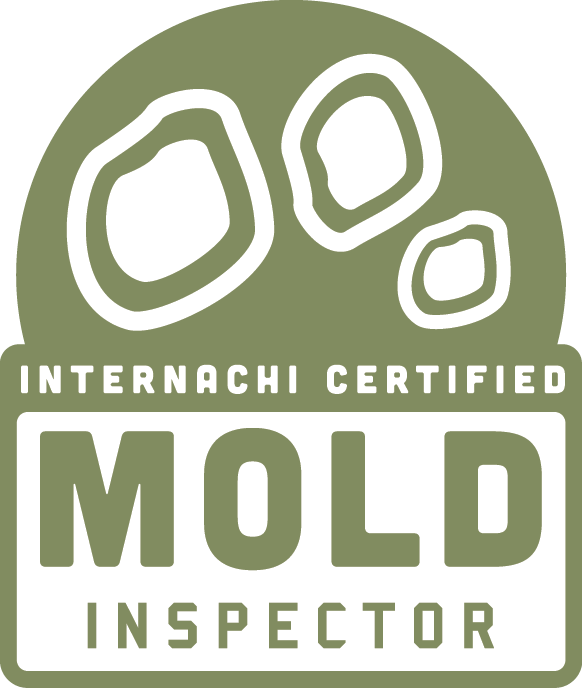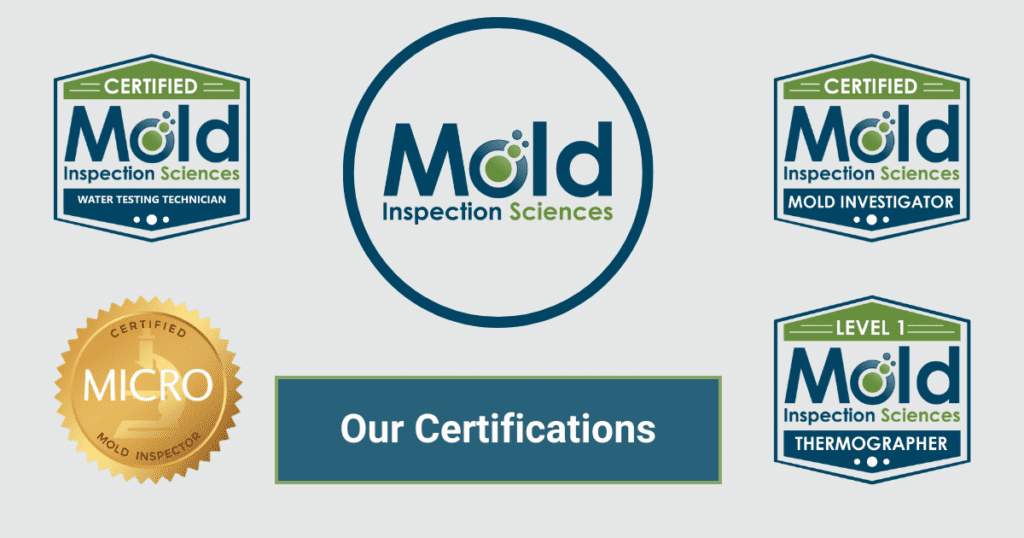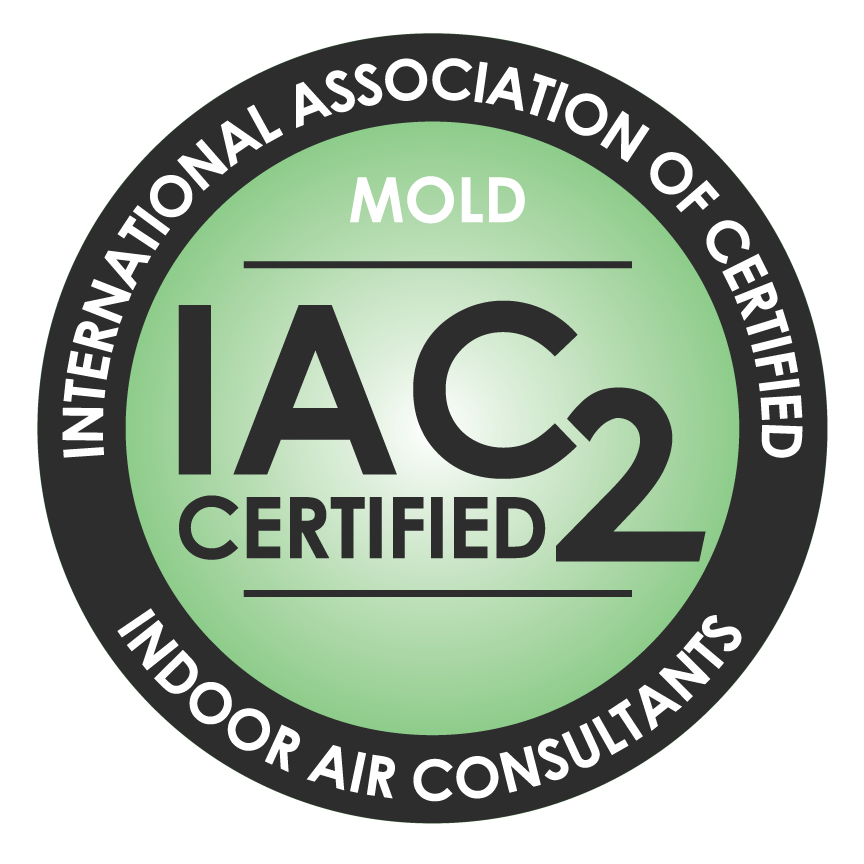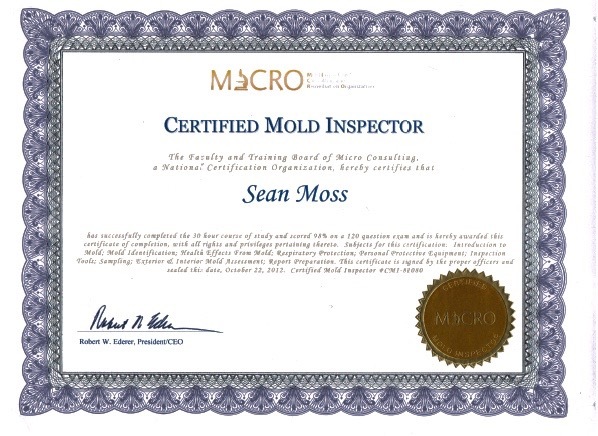Have you ever wondered whether your home is safe from mold? Look no further than Certified Mold Inspections! We are your trusted experts in identifying and assessing mold growth in residential properties. With our rigorous certification process, you can be confident that our team of professionals will provide accurate and reliable inspections, ensuring a mold-free environment for you and your loved ones. From testing the air quality to locating hidden mold sources, we utilize advanced techniques to deliver comprehensive reports and personalized recommendations. Say goodbye to any worries about mold and say hello to peace of mind with Certified Mold Inspections.

What is a Certified Mold Inspection?
A certified mold inspection is a thorough assessment conducted by a trained professional to identify the presence of mold, determine the severity of mold growth, and assess any potential health risks associated with mold infestation. This inspection is crucial for maintaining a safe and healthy indoor environment.
Definition of Certified Mold Inspection
A certified mold inspection involves a detailed examination of a property, including both the visual inspection of areas prone to mold growth and the collection of air and surface samples for laboratory analysis. These inspections are carried out by professionals who have obtained the necessary certifications and have the expertise to accurately assess and identify mold issues.
How is Certification Obtained?
To become a certified mold inspector, individuals typically need to complete specialized training programs that provide in-depth knowledge about mold growth, identification techniques, sampling methods, and health risks. After completing the necessary training, inspectors can obtain certifications from recognized organizations that confirm their expertise in the field.
Importance of Certified Mold Inspections
Certified mold inspections are vital for several reasons. Firstly, they offer peace of mind by identifying any existing mold problems that may be hidden from plain sight. Secondly, they help determine the severity of mold growth, which is crucial for effective remediation efforts. Lastly, they provide valuable information about the type of mold species present and any associated health risks, enabling homeowners and property owners to make informed decisions about mold remediation.
Benefits of Certified Mold Inspections
Identifying the Presence of Mold
One of the primary benefits of a certified mold inspection is the ability to identify the presence of mold. Professional inspectors are trained to spot mold growth, even in hidden or hard-to-reach areas. By detecting mold early on, homeowners can take prompt action to prevent further spread and potential health issues.
Determining the Severity of Mold Growth
Certified mold inspections not only identify the presence of mold but also determine the severity of the infestation. This assessment helps prioritize the need for mold remediation and guides professionals in developing the most effective removal strategies. By understanding the extent of the problem, property owners can address the issue promptly and prevent extensive damage.
Identification of Mold Species
Another crucial benefit of certified mold inspections is the identification of the mold species present in the property. Different mold species have varying levels of toxicity and health risks. By knowing the specific mold species, homeowners can better understand the potential health effects and take appropriate measures to eliminate the mold.
Assessment of Health Risks
Mold infestations can have detrimental effects on human health, particularly for individuals with allergies or respiratory conditions. Certified mold inspections help assess the potential health risks associated with the mold present in the property, allowing homeowners to take the necessary precautions or seek medical advice if needed.
Professional Recommendations for Mold Remediation
Certified mold inspectors provide professional recommendations for mold remediation based on their findings during the inspection. These recommendations may include the necessary actions to eliminate the mold, suggestions for preventing future mold growth, and guidance on maintaining a mold-free environment. By following these recommendations, property owners can ensure a safe and healthy living or working environment.
The Process of Certified Mold Inspections
Certified mold inspections follow a systematic process to thoroughly assess and evaluate the property for mold infestation. The typical steps involved in a certified mold inspection include:
Initial Assessment
The inspector conducts an initial assessment to gather information about any visible signs of mold growth, water damage, or moisture sources in the property. This assessment helps establish the areas that require closer inspection and guides the subsequent steps of the inspection process.
Visual Inspection
During the visual inspection, the certified mold inspector thoroughly examines the property, checking areas that are prone to mold growth, such as basements, bathrooms, and crawl spaces. They look for visible signs of mold, including discoloration, black spots, and musty odors. Special attention is given to areas with water damage or visible moisture issues.
Air and Surface Sampling
Air and surface sampling is an essential part of certified mold inspections. This involves collecting air samples from different areas of the property to test for mold spores in the indoor air. Surface sampling is done by swabbing or tape-lifting areas suspected of mold growth. These samples are then sent to a laboratory for analysis.
Laboratory Analysis
The samples collected during the inspection are sent to a certified laboratory for analysis. The laboratory analyzes the samples to determine the type and concentration of mold spores present in the air and on surfaces. The results of the analysis provide valuable information about the extent and severity of the mold problem.
Final Report and Recommendations
Based on the findings from the visual inspection and laboratory analysis, the certified mold inspector compiles a comprehensive final report. This report includes detailed information about the mold infestation, its severity, the types of mold species identified, and any potential health risks. Additionally, the report provides recommendations for mold remediation, preventive measures, and maintenance strategies.
Factors to Consider when Choosing a Certified Mold Inspector
When selecting a certified mold inspector for your property, several factors should be taken into consideration:
Certifications and Credentials
Ensure that the mold inspector holds the necessary certifications from recognized organizations. These certifications demonstrate the inspector’s expertise and knowledge in the field of mold inspections.
Experience and Expertise
Consider the inspector’s experience and expertise in performing mold inspections. An experienced inspector is more likely to accurately identify and assess the extent of mold infestations.
References and Reviews
Check for references and online reviews of the inspector or the inspection company. Feedback from previous clients can provide insights into the inspector’s professionalism, thoroughness, and reliability.
Insurance and Liability Coverage
Verify if the inspector or the inspection company has appropriate insurance and liability coverage. This ensures that you are protected in case of any damages or issues related to the inspection process.
Availability and Timeliness
Consider the availability and timeliness of the inspector. It is important to choose an inspector who can accommodate your schedule and perform the inspection within a reasonable timeframe.
Cost of Inspection Services
Consider the cost of the inspection services offered. While price should not be the sole determining factor, it is essential to consider the value provided by the inspector in relation to the cost.

Common Steps Taken during Certified Mold Inspections
Certified mold inspections involve several common steps that help inspectors assess and identify mold infestations. These steps include:
Checking for Moisture Sources
Inspectors carefully examine the property for any moisture sources or water damage that may contribute to mold growth. This includes checking for leaks, condensation, or elevated humidity levels.
Assessing Building Materials
During the inspection, the inspector assesses the building materials for any signs of water damage or mold growth. Materials such as drywall, wood, carpeting, and insulation are examined for discoloration, warping, or mold-like odors.
Examining Ventilation Systems
Ventilation systems play a critical role in preventing mold growth. Inspectors examine the property’s ventilation systems, including HVAC systems and exhaust fans, to ensure optimal functionality and airflow.
Searching for Visible Signs of Mold Growth
Certified mold inspectors meticulously search for visible signs of mold growth in various areas of the property. This includes checking walls, ceilings, flooring, and any other areas susceptible to moisture or poor ventilation.
Collecting Samples for Testing
As mentioned earlier, certified mold inspections involve collecting air and surface samples for laboratory analysis. Inspectors use specialized tools and techniques to carefully collect these samples and send them off for testing.
Signs and Symptoms of Mold Infestation
Recognizing the signs and symptoms of mold infestation is essential for addressing the issue promptly. Some common indicators of mold growth include:
Visible Mold Growth
The presence of visible mold growth, such as black spots, discoloration, or fuzzy patches on surfaces, is a clear sign of mold infestation. Inspectors can identify such growth during the visual inspection.
Musty Odors
Mold often produces a distinct musty odor. If you notice persistent musty smells, especially in enclosed spaces or areas with poor ventilation, it may indicate hidden mold growth.
Water Damage and Leaks
Water damage, whether from leaks, floods, or excessive moisture, often leads to mold growth. If you have experienced any water-related issues, it is crucial to assess for potential mold infestation.
Allergic Reactions
For individuals prone to allergies, exposure to mold spores can trigger allergic reactions. Symptoms may include sneezing, coughing, skin rashes, itchy eyes, and nasal congestion.
Respiratory Issues
Mold can also cause respiratory issues, particularly in individuals with pre-existing respiratory conditions such as asthma. Symptoms may include difficulty breathing, wheezing, and chest tightness.

Frequently Asked Questions about Certified Mold Inspections
What is the purpose of a certified mold inspection?
The purpose of a certified mold inspection is to identify the presence of mold, determine the extent of mold growth, assess any associated health risks, and provide professional recommendations for mold remediation.
How long does a certified mold inspection take?
The duration of a certified mold inspection depends on the size of the property and the extent of mold growth. On average, inspections can range from a few hours to a full day.
Can mold be completely removed from a property?
With proper mold remediation techniques, it is possible to remove mold from a property. However, it is essential to address the root cause of the mold growth and take preventive measures to minimize the risk of recurrence.
What are the costs associated with certified mold inspections?
The cost of a certified mold inspection varies depending on factors such as the size of the property, the extent of mold growth, and the location. It is advisable to obtain quotes from different inspectors or inspection companies to compare prices.
Are certified mold inspections necessary for all properties?
While not all properties may require certified mold inspections, it is recommended for properties with a history of water damage, elevated humidity levels, or visible signs of mold growth. Additionally, individuals with allergies or respiratory conditions may benefit from having a certified mold inspection to assess potential health risks.
Tips to Prevent Mold Growth
Taking preventive measures can help minimize the risk of mold growth in your property. Here are some tips to prevent mold:
Reduce Indoor Humidity Levels
Monitor and control indoor humidity levels to prevent excess moisture. Use dehumidifiers or proper ventilation systems in areas prone to high humidity, such as bathrooms, kitchens, and basements.
Fix Water Leaks Promptly
Address any water leaks or plumbing issues promptly. Repairing leaks can prevent water accumulation and minimize the risk of mold growth.
Improve Ventilation
Ensure proper airflow and ventilation throughout the property. Use exhaust fans in bathrooms and kitchens to remove excess moisture and prevent condensation.
Use Mold-Resistant Building Materials
When renovating or constructing a property, consider using mold-resistant building materials. These materials are designed to inhibit mold growth and minimize the chances of mold infestation.
Regularly Maintain HVAC Systems
Regularly maintain and clean HVAC systems to prevent moisture buildup and potential mold growth within the system. Change air filters regularly to ensure clean air circulation.

The Dangers of Mold Infestation
Mold infestation can pose significant risks to both property and human health. Some of the dangers associated with mold include:
Respiratory Issues
Exposure to mold spores can lead to respiratory problems, particularly in individuals with allergies or asthma. Prolonged exposure to mold can worsen respiratory symptoms and trigger asthma attacks.
Allergies and Asthma
Mold is a common allergen and can cause allergic reactions in susceptible individuals. Symptoms may include sneezing, itchy eyes, runny nose, and skin rashes.
Weakened Immune System
Certain types of molds, such as black mold (Stachybotrys chartarum), produce mycotoxins that can weaken the immune system. Prolonged exposure to mycotoxins can lead to chronic health issues and affect overall immune function.
Structural Damage to the Property
Mold growth can result in structural damage to the property if left untreated. It can weaken building materials, causing deterioration and compromising the structural integrity of walls, ceilings, and floors.
Choosing a Certified Mold Inspection Company
When selecting a company for certified mold inspections, consider the following steps:
Research and Background Check
Research different certified mold inspection companies and check their background. Look for reliable and reputable companies that have positive reviews and a track record of delivering quality services.
Ask for Recommendations
Seek recommendations from trusted sources, such as friends, family, or professionals in the real estate or property management industry. Their firsthand experiences can help narrow down the options.
Interview Potential Inspection Companies
Contact potential inspection companies and ask them relevant questions to gauge their knowledge and professionalism. Inquire about their certifications, experience, and the specific steps they follow during the inspection process.
Evaluate Certifications and Experience
Verify that the inspection company holds the necessary certifications and has extensive experience in the field of mold inspections. This ensures that they possess the expertise required to conduct a thorough inspection.
Review Inspection Reports
Ask the inspection company for sample inspection reports or previous inspection reports they have conducted. Review these reports to ensure the company provides comprehensive and detailed information.
Consider Pricing and Value
Compare the pricing and value offered by different inspection companies. While cost is an important consideration, it is crucial to prioritize the quality, experience, and expertise of the inspector when making the final decision.
By following these steps, you can confidently choose a certified mold inspection company that meets your needs and ensures a thorough and accurate assessment of your property.
In conclusion, certified mold inspections play a crucial role in maintaining a safe and healthy indoor environment. These inspections provide valuable information about the presence, severity, and species of mold in a property, as well as any associated health risks. By hiring a certified mold inspector, you can identify and address mold issues promptly, prevent further damage, and ensure a mold-free living or working environment. Remember, prevention and early detection are key to mitigating the risks and dangers of mold infestation.
